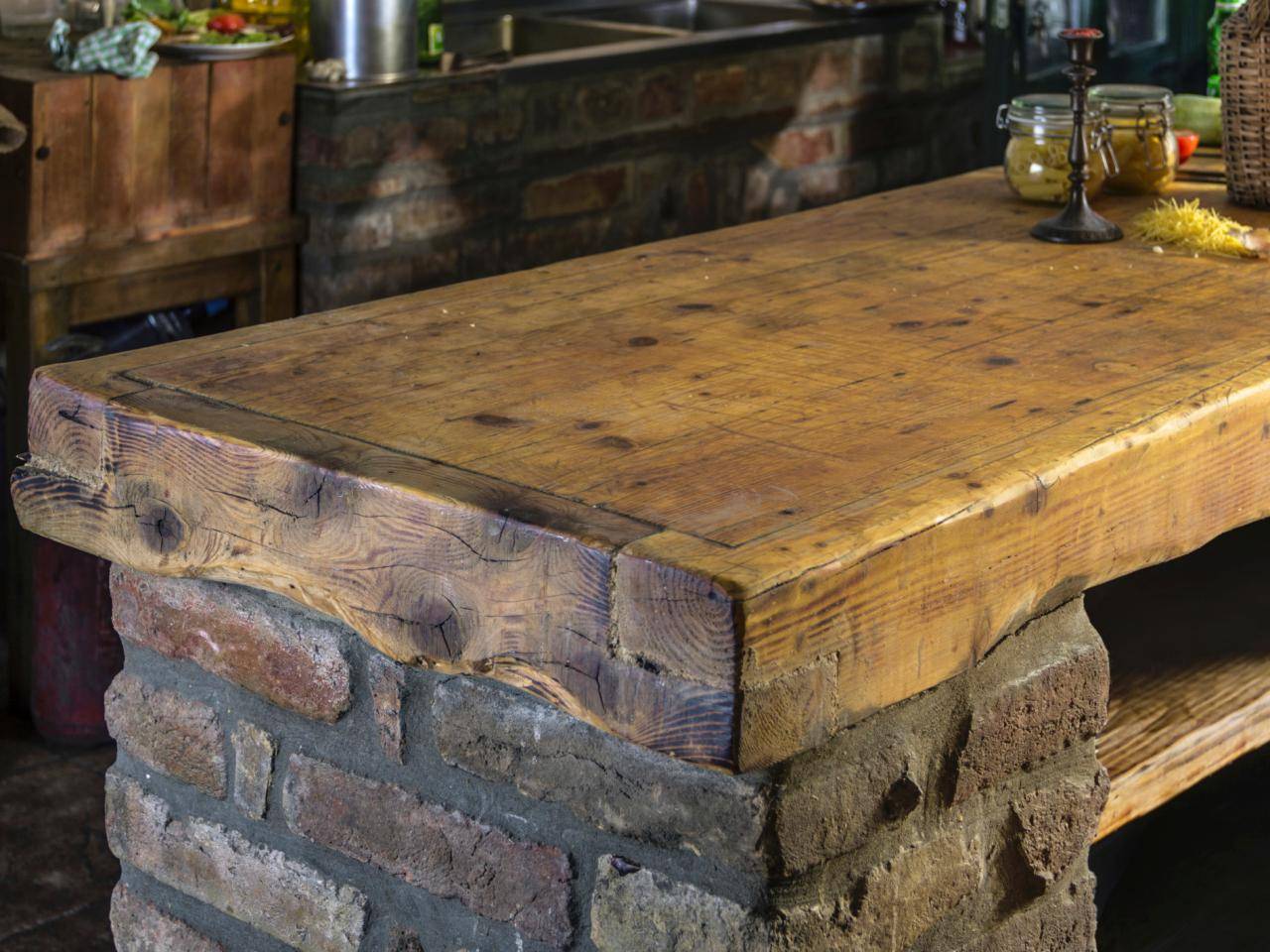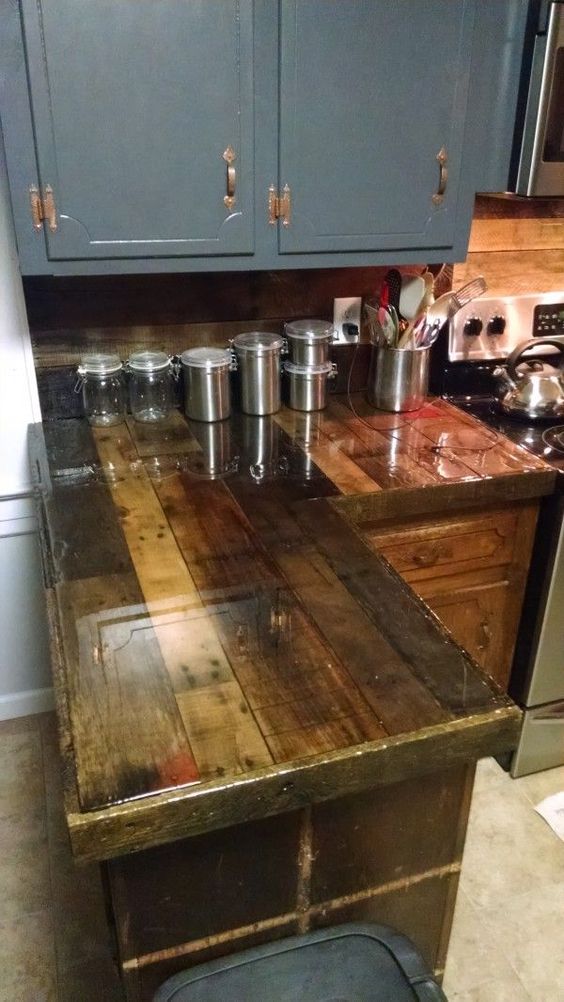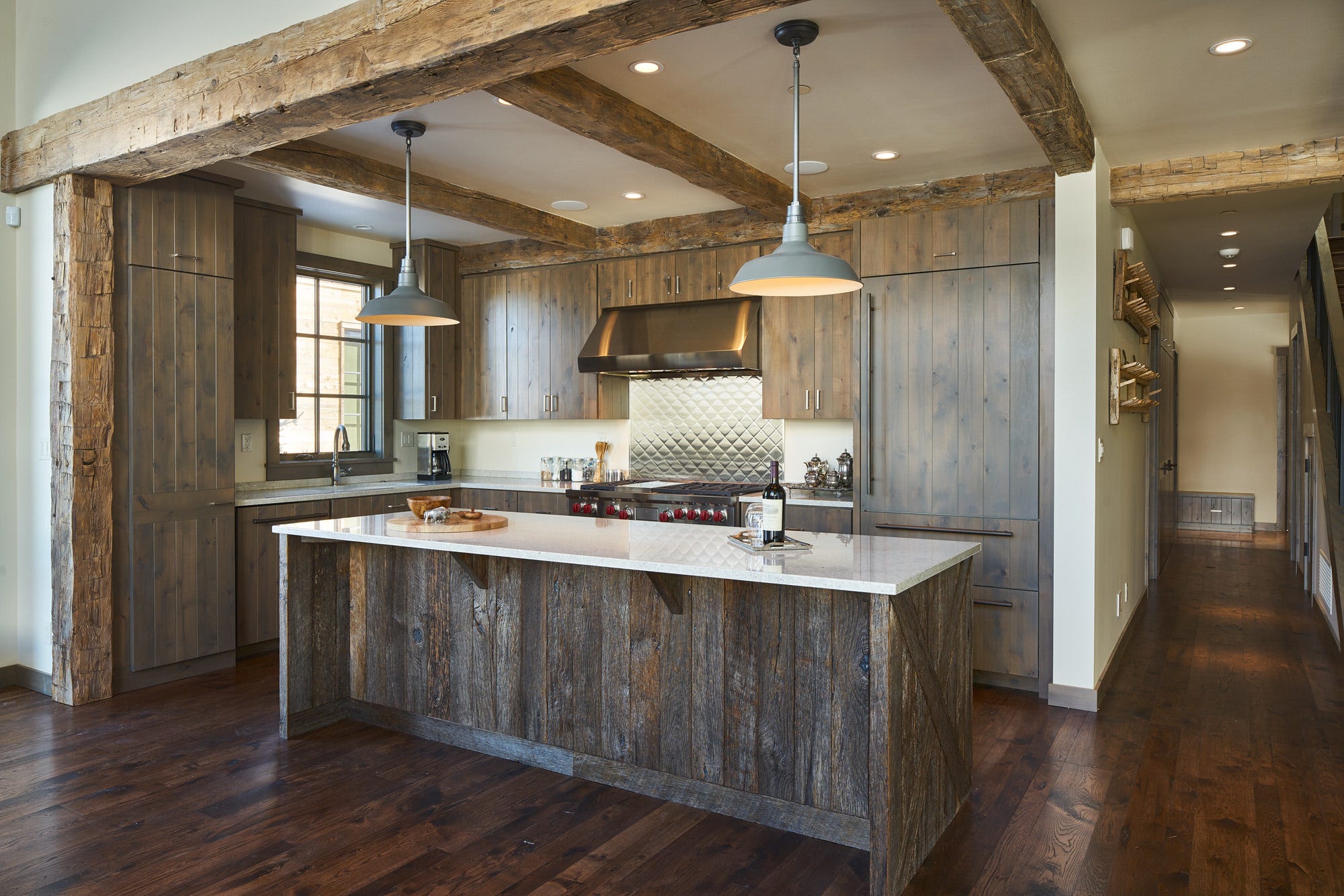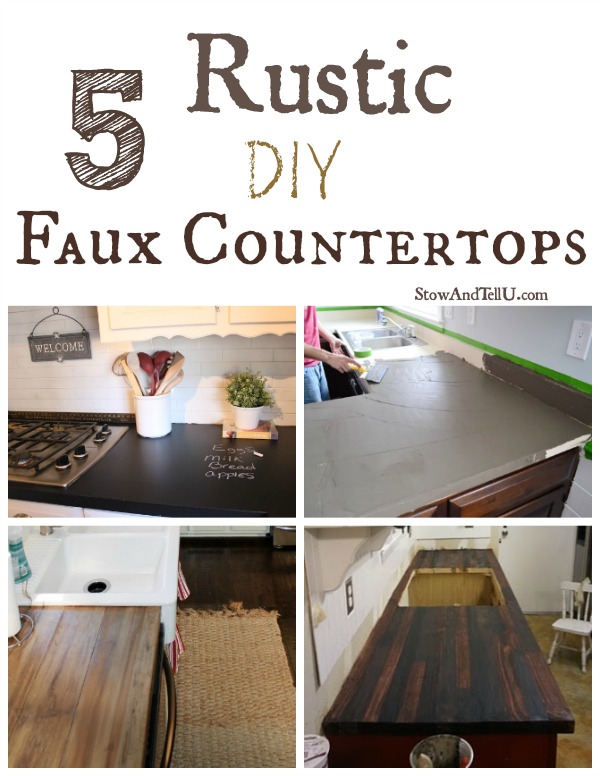When designing a kitchen with a warm and inviting atmosphere, rustic kitchen countertops are a timeless choice that brings a sense of natural charm and earthy elegance. These countertops evoke the feel of old-world craftsmanship, often utilizing raw materials and textures that blend seamlessly with traditional and contemporary settings. A rustic countertop doesn’t just function as a workspace; it serves as a focal point that enhances the overall aesthetic of the kitchen. Whether you’re looking for a complete kitchen overhaul or simply updating your counters, numerous rustic styles will provide your space with character and durability.
One of the most popular materials for rustic kitchen countertops is wood. Solid wood countertops add warmth and texture to the kitchen, and they age beautifully over time. Reclaimed wood, in particular, is highly sought after for its sustainability and unique patina. Whether you choose thick butcher block slabs or thinner wood panels, the grain patterns and natural imperfections give each countertop a one-of-a-kind appearance. Oak, walnut, and cherry are frequently used, but even more unusual species like mahogany or acacia can add a touch of the unexpected.
Stone is another staple in rustic countertops, particularly materials like granite, soapstone, and slate. Stone countertops have a raw, earthy quality that pairs well with rustic design, especially when left with a honed or matte finish. Granite provides durability and resistance to heat and scratches, making it ideal for kitchens where heavy cooking takes place. Soapstone, on the other hand, develops a weathered look over time, which adds to its appeal in rustic kitchens. Its smooth texture and soft color palette make it versatile enough to complement different cabinet and wall finishes.
Concrete countertops are also making a splash in rustic kitchens. While concrete might seem too industrial for a rustic theme, the finish and treatment options can make it perfect for this style. A textured or polished concrete surface offers an organic, handcrafted feel that fits well within rustic spaces. The ability to customize concrete in terms of color and shape further adds to its appeal. Additionally, concrete can be inlaid with other materials like stones, shells, or even wood, creating a striking contrast and a truly bespoke design.

Metal countertops, while more often associated with industrial kitchens, can also lend a rustic vibe, particularly when made from materials like copper, zinc, or patina steel. Over time, these metals develop a rich patina that adds character and depth to the surface. Copper countertops, for instance, will age into warm tones of green and brown, giving the kitchen an antique feel. Zinc has a more subtle transformation, gradually shifting from a silver hue to a darker, more mellow gray. Both metals are also naturally antibacterial, making them functional as well as beautiful.
For those who prefer a combination of materials, mixing wood with stone, or concrete with metal, creates visual interest and adds layers of texture. A popular trend in rustic kitchens is using different materials for the island and the surrounding countertops. For example, a reclaimed wood island top could be paired with soapstone or granite perimeter counters, balancing warmth with practicality. This not only defines the space but also gives you the best of both worlds in terms of aesthetics and durability.
Rustic kitchen countertops also rely heavily on texture. Whether it’s the tactile grain of wood or the smooth, cool feel of stone, the texture brings an additional dimension to the space. Weathered finishes, chipped edges, and uneven surfaces only add to the authentic, lived-in look that defines rustic design. These imperfections are seen as signs of character rather than flaws, emphasizing the organic and imperfect beauty of nature. A slightly rough-hewn stone or a butcher block with visible knife marks tells a story, making your kitchen feel more connected to the past.

Color is another important consideration for rustic kitchen countertops. Neutral tones such as warm browns, grays, blacks, and deep greens are typical of the style. Earthy colors, often found in natural materials like stone and wood, create a calming and cozy ambiance. However, rustic design doesn’t mean you have to stick with just muted hues. Some homeowners choose to introduce a pop of color through cabinetry, walls, or accent decor to provide a modern twist on the classic rustic look.
Maintenance is a factor to consider when choosing rustic kitchen countertops. While materials like granite and quartzite are virtually maintenance-free, wood, concrete, and some stones like soapstone require periodic care to keep them looking their best. For wood countertops, regular oiling helps prevent cracking and keeps the surface conditioned. Concrete countertops may need to be sealed every year or two to protect against stains and moisture damage. Despite the upkeep, many homeowners find that the character and charm these materials bring are well worth the effort.
Beyond their aesthetic appeal, rustic countertops are valued for their durability and longevity. When properly maintained, wood, stone, and metal surfaces can last for decades, aging gracefully and developing their unique character over time. This long-term durability makes them a smart investment, as they often require fewer replacements than synthetic materials. In addition, many rustic countertops can be repaired rather than replaced, such as sanding down and re-oiling wood or polishing scratches out of stone.
Sustainability is another key benefit of rustic kitchen countertops. Reclaimed wood and repurposed materials not only reduce waste but also add a rich history to your kitchen. Eco-conscious homeowners may also opt for countertops made from recycled glass, concrete, or composites, which mimic natural stone but with a smaller environmental footprint. By choosing materials with a focus on sustainability, you’re not only enhancing the beauty of your kitchen but also contributing to a greener future.

Another way to enhance rustic countertops is by paying attention to the edge detail. While polished, straight edges are common in modern designs, rustic countertops often feature more organic shapes. Live-edge wood countertops, where the natural contours of the tree are preserved, bring a sense of artistry and craftsmanship to the space. Similarly, chiseled or rough-hewn edges on stone countertops add a handmade, old-world feel that elevates the rustic design to the next level.
Lighting also plays a crucial role in accentuating the beauty of rustic kitchen countertops. Pendant lights with warm, ambient bulbs over the island or task lighting beneath the cabinets can highlight the textures and materials in your countertops. Natural light is equally important, as it brings out the nuances in stone and wood surfaces. By carefully considering how your space is lit, you can enhance the visual appeal and warmth of your rustic countertops.
Finally, accessorizing your countertops with complementary elements ties the whole rustic kitchen together. Antique or vintage-inspired hardware, farmhouse sinks, and open shelving with rustic wood beams can enhance the overall look. Placing decorative items such as ceramic bowls, metal canisters, or woven baskets on the countertops brings a lived-in, yet curated feel to the kitchen. These finishing touches transform a functional workspace into a design statement that reflects both style and personality.

Common Mistakes to Avoid
One common mistake is choosing materials based solely on appearance without considering their maintenance needs. For example, wood and concrete countertops require regular care, and skipping this step can lead to damage.
Another misstep is failing to balance aesthetics with functionality. While a live-edge wood counter may look beautiful, it may not be the best choice for heavy-duty cooking. Choosing mismatched materials can also disrupt the harmony of the space. It’s important to select materials that not only complement each other but also align with the overall theme of the kitchen.
Another mistake is ignoring lighting. Even the most beautiful rustic countertop can look dull or out of place without proper lighting to highlight its textures and finishes. Finally, rushing into installation without planning can lead to mismatched seams or ill-fitted edges. Always work with skilled professionals to ensure precision.

What are the best materials for rustic kitchen countertops?
The best materials for rustic kitchen countertops depend on your personal preferences and lifestyle. Wood, reclaimed or new, is popular for its warmth and natural beauty. Stone options like granite, soapstone, and slate offer durability and a raw, earthy appearance. Concrete and metal, such as copper and zinc, provide unique textures and patinas. Each material brings its own aesthetic and maintenance requirements, so consider how you use your kitchen before deciding.
How do I maintain wood countertops in a rustic kitchen?
Maintaining wood countertops involves regular oiling to prevent cracks and dryness. Use a food-safe oil like mineral oil or beeswax to condition the wood every month or so. It’s also important to wipe up spills quickly to avoid stains and use cutting boards to prevent scratches. With proper care, wood countertops will age beautifully, developing a rich patina over time.
Are rustic kitchen countertops durable?
Yes, rustic kitchen countertops are often very durable, especially if you choose materials like granite, soapstone, or metal. Wood and concrete can also last a long time with proper care. One of the advantages of rustic materials is that their natural imperfections and wear actually enhance their character over time, making them look better as they age rather than worse.

What’s the most sustainable option for rustic countertops?
Reclaimed wood is one of the most sustainable choices for rustic countertops. By repurposing wood from old structures, you’re reducing waste and preserving natural resources. Additionally, recycled materials like concrete mixed with glass or stone can offer an eco-friendly alternative that still provides a rustic look. Look for locally sourced materials to further reduce the environmental impact.
How do I choose the right color for my rustic countertops?
Choosing the right color involves considering the overall color scheme of your kitchen. Earthy tones such as browns, grays, and greens work well in rustic settings, as they create a warm, welcoming atmosphere. For a more dramatic look, darker stones like soapstone or concrete can add depth. If you prefer a lighter aesthetic, opt for woods like maple or light-stained oak. Balance is key, so be sure the countertops complement the cabinets, walls, and flooring.
Can I mix and match materials for a rustic countertop?
Yes, mixing materials is a great way to add visual interest to your kitchen. Many homeowners use different materials for their island and perimeter countertops, such as pairing wood with stone or concrete. Just be sure the materials harmonize with each other and with the rest of your kitchen design. For example, combining a reclaimed wood island with a granite or soapstone counter adds contrast while maintaining a cohesive rustic look.

Rustic DIY Faux Countertops

Related articles: